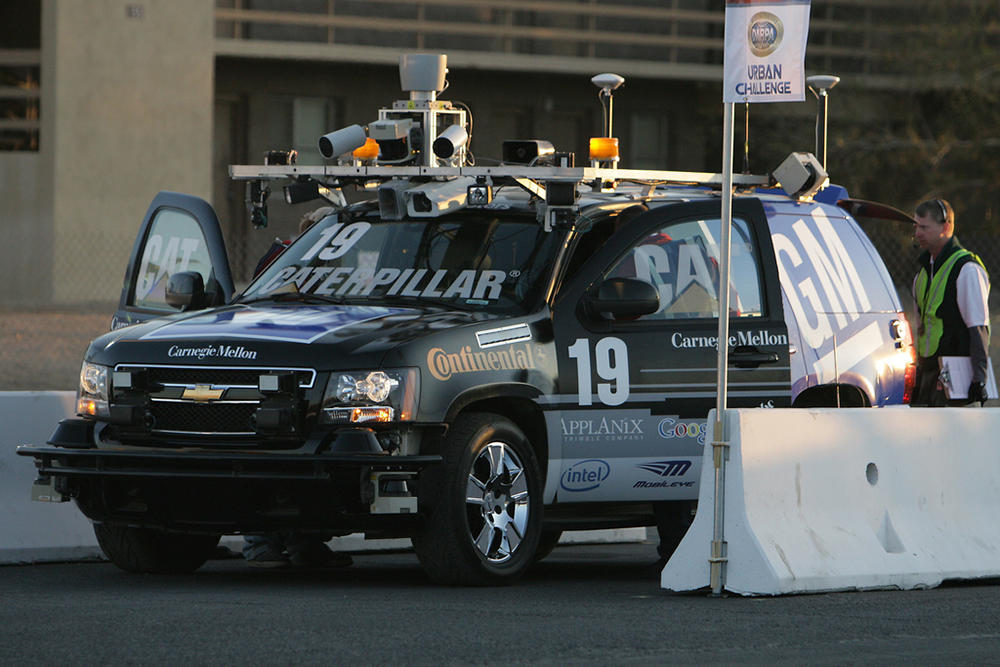- Carnegie Mellon University Self Driving Car
- Carnegie Mellon University Admission
- Carnegie Mellon University Driver Course
- Carnegie Mellon U
- Carnegie Mellon College

Principles of Architecture Design
Carnegie Mellon University Self Driving Car
| Instructor | CEU Units | # of Lectures | Hours Per Week | Tuition |
| Anthony Lattanze | 4.8 | 12 | 10-15 | $2,700 |
NASA Research Park Carnegie Mellon University Silicon Valley P.O. Box 98 Moffett Field, CA 94035 Consumer Information Carnegie Mellon University Silicon Valley Twitter.
Carnegie Mellon University Admission
- The driver (who–like all participants–must be a Carnegie Mellon student, and is almost always short, light, and female) lies down inside the vehicle with the steering and brake controls. The vehicles are completely unpowered, including the prohibition of energy storing devices such as flywheels.
- Carnegie Mellon University 5000 Forbes Avenue Pittsburgh, PA 15213 Carnegie Mellon University is an Equal Opportunity Employer/Disability/Veteran. Legal Info www.cmu.edu.
Course Objectives
The goals of this course are to introduce participants to the essential principles of architecture design. This 12 lecture course will acquaint participants with the latest concepts in software architecture and provide vital insight into the key issues influencing the design of software intensive systems within an organizational and business context. By the end of the course, participants will better understand:
- What are the key architectural drivers and their influence on systemic design.
- Guidance for eliciting and analyzing architectural drivers.
- Introduction to basic structural elements of design.
- Survey and analysis of exemplar system structures.
- Guidance for designing and documenting architectural designs.

Carnegie Mellon University Driver Course
Prerequisites
Participants should have prior experience in the development of software-intensive systems and some familiarity with modern software engineering concepts.
Required Textbooks:
- TBD
- Various readings will be provided to support each lecture.
Course Logistics:
There are 12 lectures in the course. Lectures are approximately 80 minutes in duration. Each lecture has a set of readings and questions based upon the reading material. These may be done before or after the associated lecture. In addition to the weekly readings and questions, there is a team project that is to be completed in 3 phases. The project is designed to provide an opportunity for participants to think through the problem from inception to software architecture proposal and documentation using the skills, methodology, and knowledge learned in the course. Attendees will get feedback on their work from instructors allowing them to improve their designs and their proficiency with course techniques. A project description will be provided that outlines what must be produced by the teams and when.
Topics
Carnegie Mellon U
Lecture 1: Software Architecture Defined
Lecture 2: Architectural Drivers
Lecture 3: Architectural Structures
Lecture 4: Structures: Data-Flow
Lecture 5: Structures: Events and Message Passing
Lecture 6: Structures: Call-Return
Lecture 7: Structures: Client-Server & Tiers
Lecture 8: Structures: Middleware
Lecture 9: Structures: Data Centric Systems
Lecture 10: Guidance for the Architect
Lecture 11: Architecture Documentation
Lecture 12: Course Summary – What Next
Carnegie Mellon College
Play a vital role in innovation management by transforming data from all areas of business operations into actionable insights. Learn how to identify and describe an organization’s current and future-state business processes. Then, help stakeholders envision a better future and how their work must change to support it.
Diagnose and articulate clients’ business and technology needs and apply the best framework to address their emerging challenges. Learn how to describe the current, future and end state of technology within an organization, and bridge its technology plan with its business operations.
Validate the market readiness of technologies. Assess and prioritize the feasibility of options. Establish optimal timeframes to design, develop and implement technologies to an appropriate readiness level. Learn to develop nimble business models capable of responding to sudden market changes, and how to use nuanced knowledge to raise capital.
Develop, design and implement product and technology roadmaps. Diagnose market dynamics, analyze marketability and financial feasibility, and execute the full Stage Gate Process. Learn to manage a product portfolio in alignment with an organization’s business strategy and market segments.
Optimize an organization’s portfolio of technologies for risk, reward, stability and growth based upon strategic business objectives. Develop technology portfolios to meet short, intermediate and long-term needs. Learn to create integration plans that adapt to organizational, economic, political and technological shifts.
